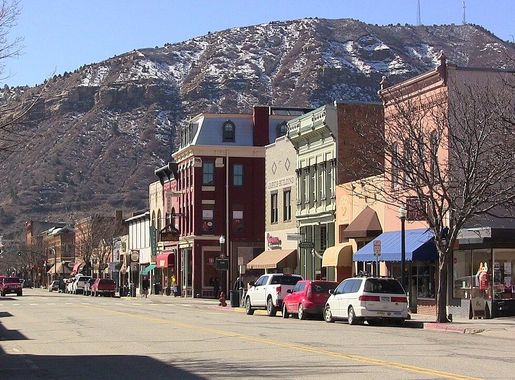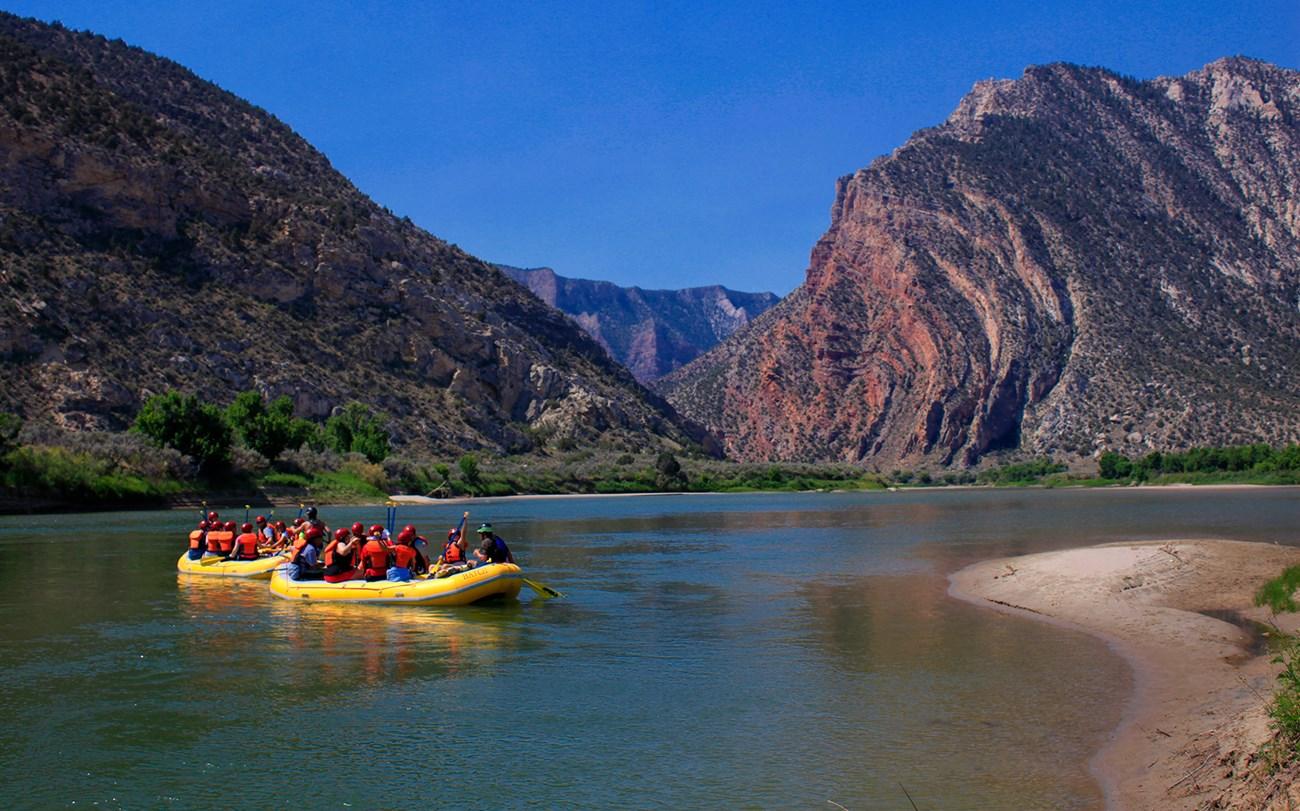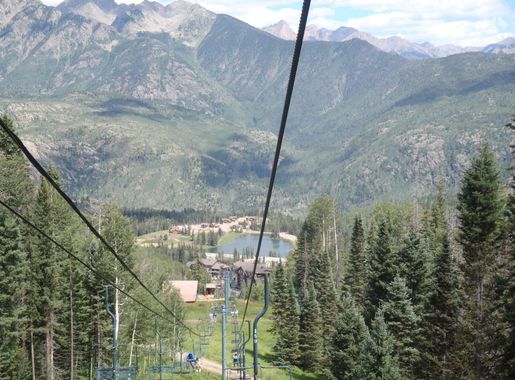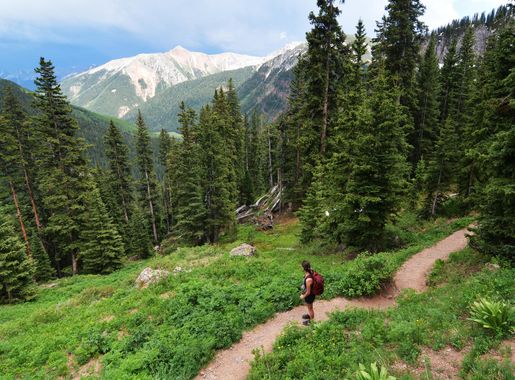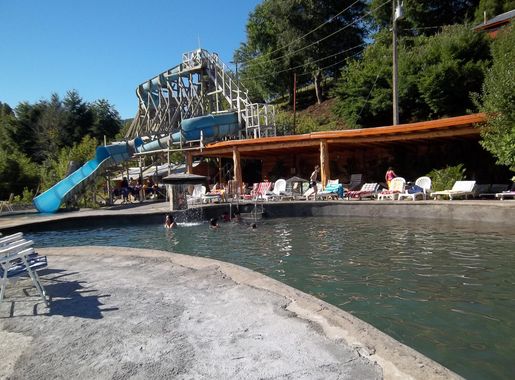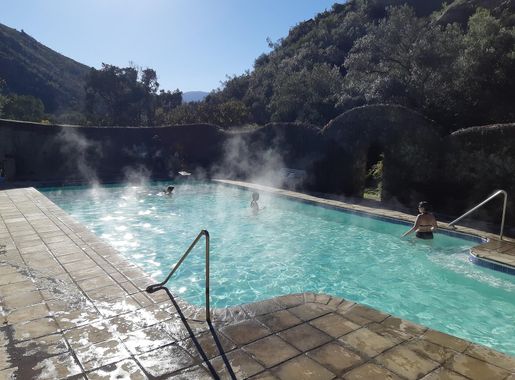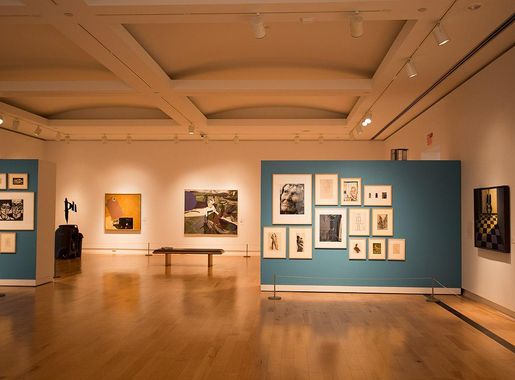
Durango: The Heart of the San Juan Mountains
Discover Durango, Colorado: A Perfect Blend of History, Adventure, and Natural Beauty in the San Juan Mountains
Nestled in the Animas River Valley, Durango is a charming city known for its rich history and breathtaking natural beauty. As you explore Durango, you'll find a blend of Old West charm and modern-day amenities. The historic downtown area is lined with preserved 19th-century buildings, offering a picturesque backdrop for shopping, dining, and cultural exploration. Outdoor enthusiasts will find themselves in paradise in Durango. The city is surrounded by the San Juan Mountains, providing endless opportunities for hiking, biking, and skiing. The nearby Mesa Verde National Park, a UNESCO World Heritage site, allows visitors to explore ancient cliff dwellings and learn about the history of the Pueblo people. For a unique experience, take a ride on the Durango & Silverton Narrow Gauge Railroad. This historic steam train offers scenic trips through the mountains and along the Animas River. It's a journey back in time and a chance to see some of the most stunning landscapes in Colorado. Whether you're a history buff, an adventure seeker, or simply looking to relax in a beautiful setting, Durango has something to offer everyone.
Local tips in Durango
- Visit the historic Strater Hotel for a glimpse into Durango's past and to enjoy live music in the Diamond Belle Saloon.
- Book your train ride on the Durango & Silverton Narrow Gauge Railroad in advance, especially during peak seasons.
- Take advantage of the numerous hiking and biking trails in the San Juan National Forest for breathtaking views and outdoor fun.
- Explore the Animas River Trail, a scenic path perfect for walking or biking along the river.
- Don't miss out on local breweries and distilleries, which offer unique craft beers and spirits.
- Visit the Durango Farmers Market on Saturdays to enjoy fresh local produce and handmade goods.
Durango: The Heart of the San Juan Mountains
Nestled in the Animas River Valley, Durango is a charming city known for its rich history and breathtaking natural beauty. As you explore Durango, you'll find a blend of Old West charm and modern-day amenities. The historic downtown area is lined with preserved 19th-century buildings, offering a picturesque backdrop for shopping, dining, and cultural exploration. Outdoor enthusiasts will find themselves in paradise in Durango. The city is surrounded by the San Juan Mountains, providing endless opportunities for hiking, biking, and skiing. The nearby Mesa Verde National Park, a UNESCO World Heritage site, allows visitors to explore ancient cliff dwellings and learn about the history of the Pueblo people. For a unique experience, take a ride on the Durango & Silverton Narrow Gauge Railroad. This historic steam train offers scenic trips through the mountains and along the Animas River. It's a journey back in time and a chance to see some of the most stunning landscapes in Colorado. Whether you're a history buff, an adventure seeker, or simply looking to relax in a beautiful setting, Durango has something to offer everyone.
When is the best time to go to Durango?
Iconic landmarks you can’t miss
Durango & Silverton Narrow Gauge Railroad
Experience the breathtaking beauty and rich history of Colorado aboard the iconic Durango & Silverton Narrow Gauge Railroad, a journey through time and nature.
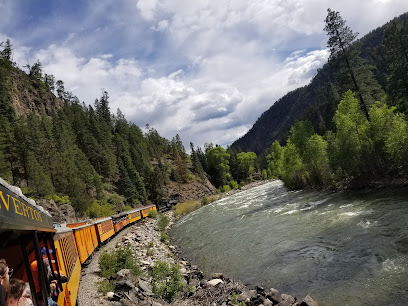
Steamworks Brewing Company
Discover the vibrant craft beer scene at Steamworks Brewing Company in Durango, where delicious brews meet a warm, welcoming atmosphere.
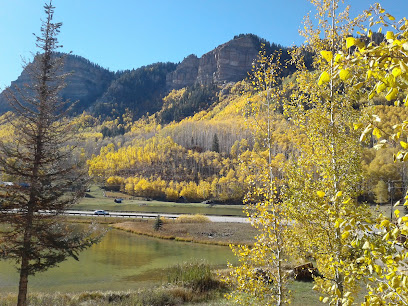
Carver Brewing Co.
Discover the essence of Durango at Carver Brewing Co., where delicious American cuisine meets a vibrant craft beer experience.
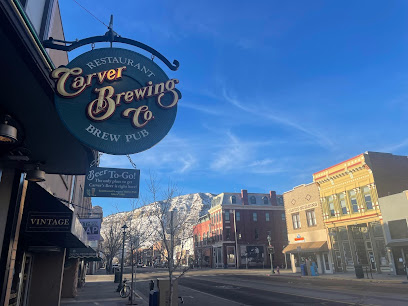
Strater Hotel
Discover the rich history and unique charm of the Strater Hotel in Durango, Colorado, where the Wild West meets modern comfort.
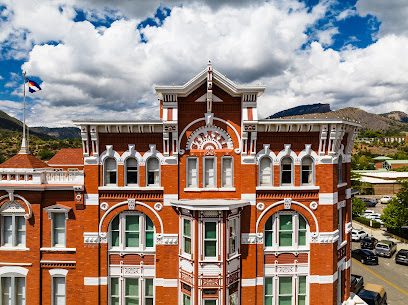
Mild to Wild Rafting & Jeep Tours
Explore the breathtaking beauty of Durango, Colorado, with thrilling rafting adventures and scenic jeep tours at Mild to Wild Rafting & Jeep Tours.

Mountain Waters Rafting
Experience the thrill of white-water rafting at Mountain Waters Rafting in Durango, Colorado - adventure and stunning landscapes await!
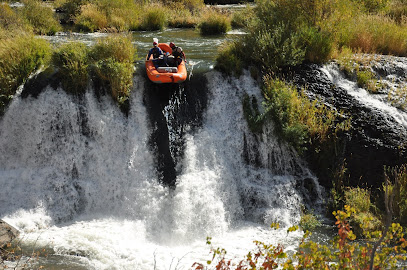
El Moro Spirits and Tavern
Experience the vibrant flavors of Durango at El Moro Spirits and Tavern, where culinary excellence meets a lively atmosphere.
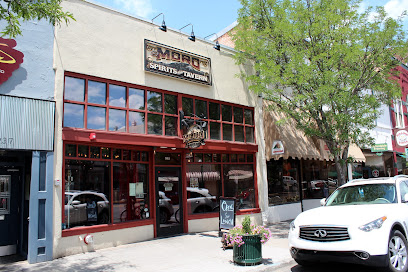
Pinkerton Hot Springs
Experience the tranquil beauty of Pinkerton Hot Springs, a scenic oasis in Durango, Colorado, perfect for relaxation and nature exploration.
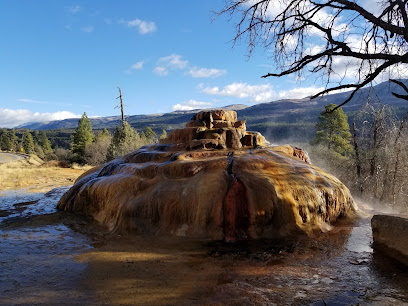
Animas Brewing Company
Discover the essence of craft beer at Animas Brewing Company, a vibrant brewery in Durango, Colorado, offering unique brews and a welcoming atmosphere.
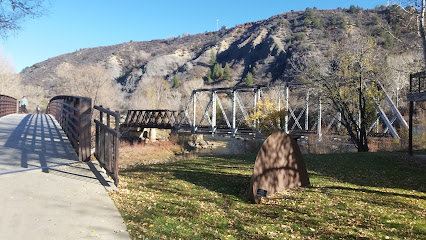
11th Street Station
Experience the best of Durango at 11th Street Station, where local flavors meet a lively gastropub atmosphere in the heart of Colorado.
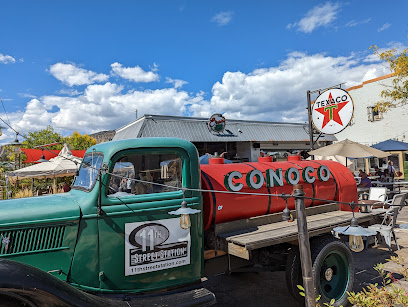
Chimayo Stone Fired Kitchen
Experience the best of American, Mediterranean, and Southwestern cuisine at Chimayo Stone Fired Kitchen in Durango, where every meal is a celebration of flavor.
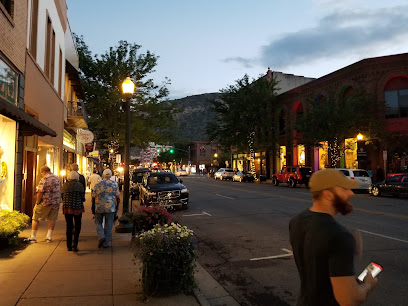
Jean Pierre Bakery & Wine Bar
Experience the taste of France in Durango at Jean Pierre Bakery & Wine Bar, featuring exquisite pastries and a curated selection of fine wines.
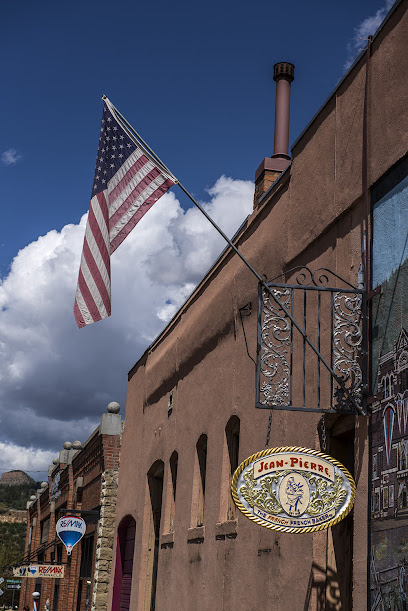
Animas Chocolate & Coffee Company
Discover the rich flavors of artisanal chocolates and expertly brewed coffee at Animas Chocolate & Coffee Company in Durango, Colorado.
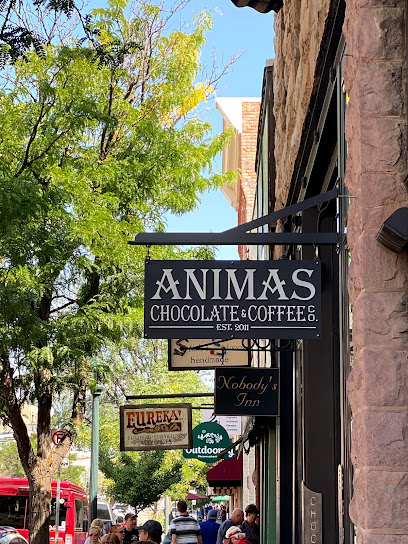
Durango Off Leash Dog Park
Explore the Durango Off Leash Dog Park, a beautiful haven for dogs and their owners in the heart of Colorado's stunning landscape.
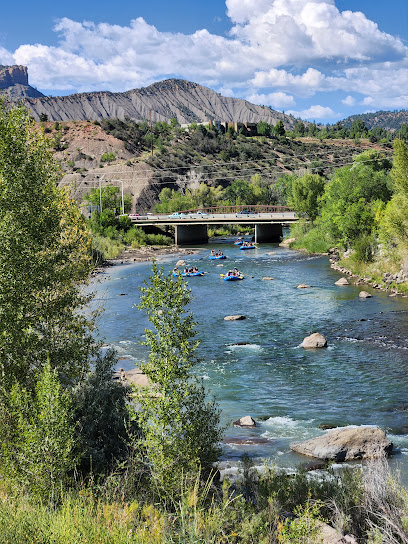
The Powerhouse
Explore The Powerhouse in Durango, Colorado, an interactive children's museum that inspires creativity and learning through engaging exhibits and events.
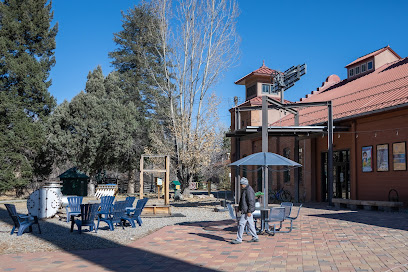
Unmissable attractions to see
Durango & Silverton Narrow Gauge Railroad
Discover the iconic Durango & Silverton Narrow Gauge Railroad, a historic train journey through Colorado's stunning Rocky Mountains and rich heritage.
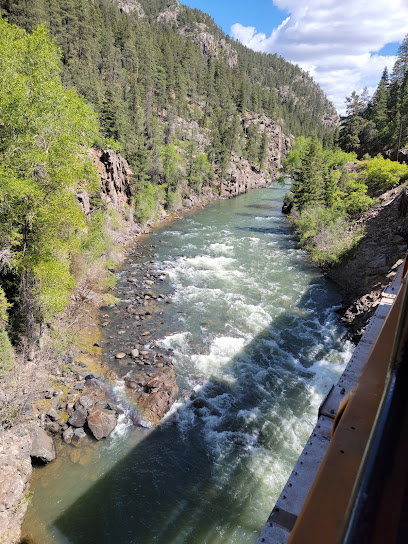
Durango Rivertrippers & Adventure Tours
Discover the thrill of white-water rafting, ATV adventures, and breathtaking sightseeing in Durango's pristine landscapes with Durango Rivertrippers & Adventure Tours.
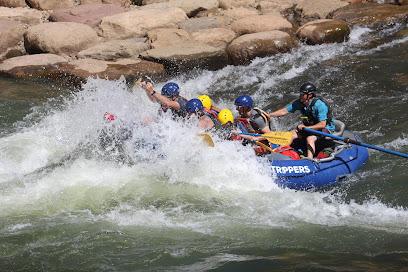
Mesa Verde Visitor & Research Center
Explore the rich heritage of the Ancestral Puebloans at Mesa Verde Visitor & Research Center, your gateway to Colorado's breathtaking ancient cliff dwellings.

Mild to Wild Rafting & Jeep Tours
Experience the thrill of rafting and scenic jeep tours in Durango, Colorado, with Mild to Wild Rafting & Jeep Tours, perfect for adventurers of all ages.
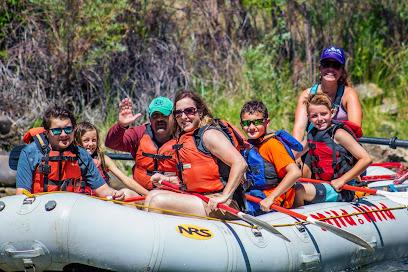
Durango Hot Springs Resort & Spa
Experience ultimate relaxation at Durango Hot Springs Resort & Spa, where natural hot springs meet luxurious spa treatments in breathtaking Colorado.
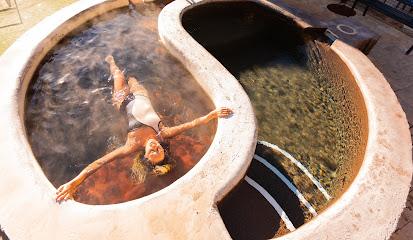
Mountain Waters Rafting
Adventure awaits at Mountain Waters Rafting in Durango, Colorado! Experience thrilling white-water rafting and explore the stunning Animas River.
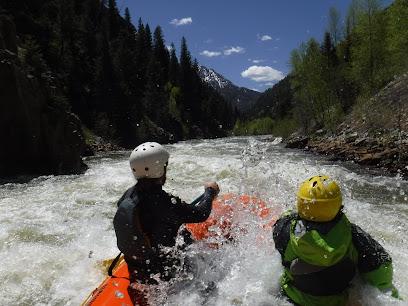
Pinkerton Hot Springs
Discover the serene beauty of Pinkerton Hot Springs in Durango, Colorado, where relaxation meets stunning natural landscapes in a peaceful getaway.
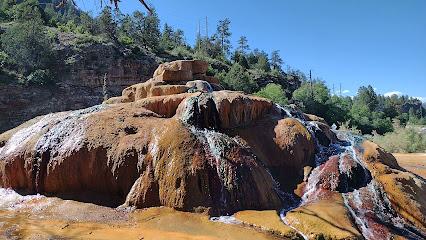
Pinkerton Hot Springs
Experience the natural beauty and soothing waters of Pinkerton Hot Springs, a serene escape in Colorado's breathtaking landscape.
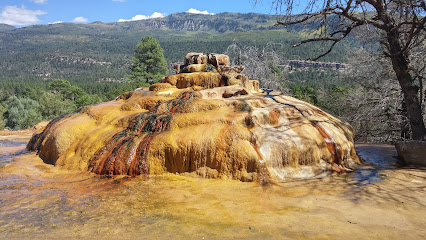
Durango Adventures and Zipline Tours
Experience the thrill of ziplining and outdoor adventures at Durango Adventures and Zipline Tours in beautiful Colorado.
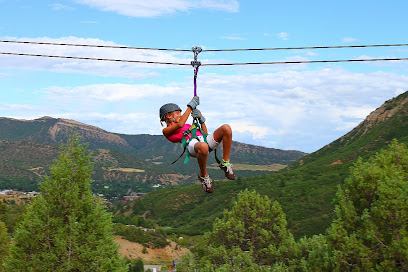
Bakers Bridge
Discover the historical charm and natural beauty of Bakers Bridge in Durango, Colorado, an essential stop for tourists seeking adventure and history.
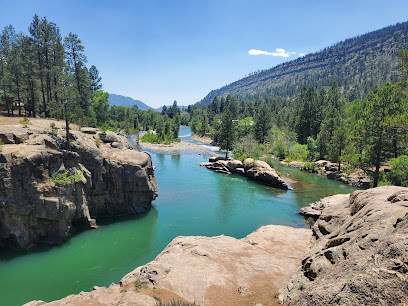
The Powerhouse
Discover the wonders of science and history at The Powerhouse in Durango, Colorado—a family-friendly museum with interactive exhibits and engaging programs.
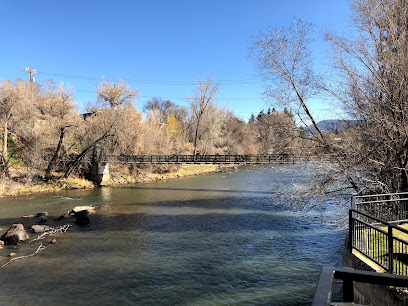
Oxbow Park and Preserve
Discover the breathtaking Oxbow Park and Preserve in Durango, Colorado, where nature and adventure meet in perfect harmony.
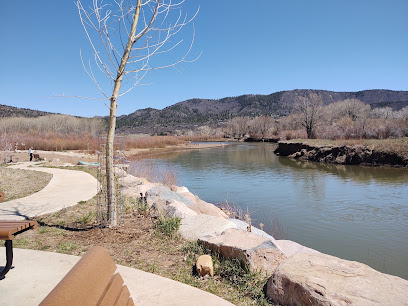
Animas City Park
Experience the natural beauty and recreational bliss of Animas City Park in Durango, Colorado, a perfect spot for relaxation and family fun.
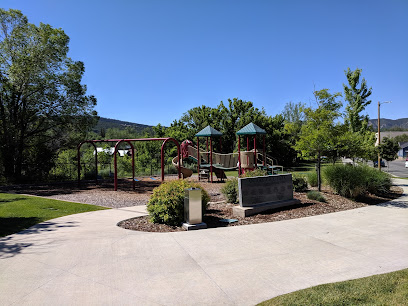
Schneider Park
Explore Schneider Park in Durango, Colorado – a scenic destination with pickleball courts, picnic areas, and beautiful walking trails.
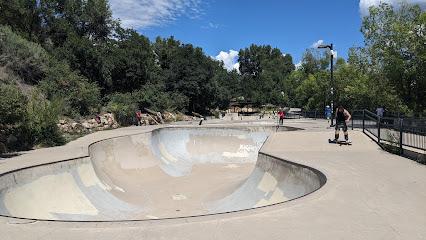
Wildlife Division
Discover the beauty and diversity of Colorado's wildlife at the Wildlife Division in Durango, your gateway to nature and conservation.
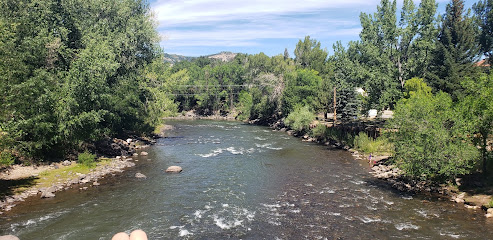
Essential places to dine
Serious Texas BBQ South Durango, CO.
Discover authentic Texas barbecue at Serious Texas BBQ in Durango - where every bite tells a story of flavor and tradition.
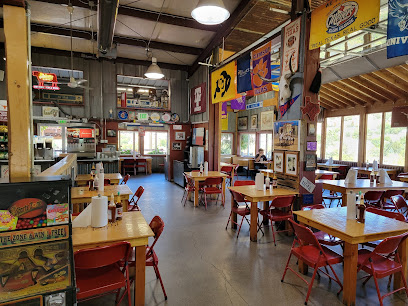
GRASSBURGER (DGO Downtown)
Discover gourmet burgers made with locally sourced ingredients at GRASSBURGER in Durango – where flavor meets sustainability.
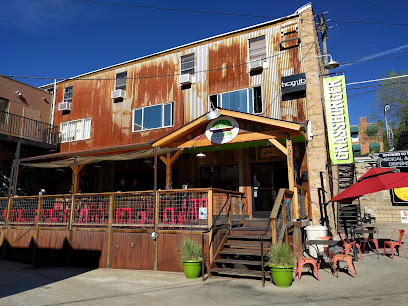
Fired Up Pizzeria
Experience authentic Italian cuisine at Fired Up Pizzeria in Durango—where fresh ingredients meet wood-fired perfection.
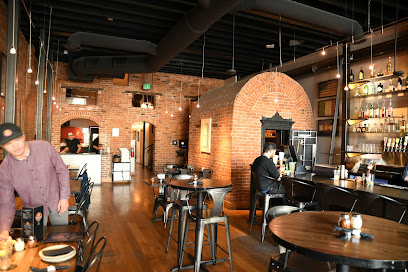
Serious Texas BBQ North Durango, CO.
Experience authentic barbecue at Serious Texas BBQ in Durango - where flavor meets tradition in every bite.
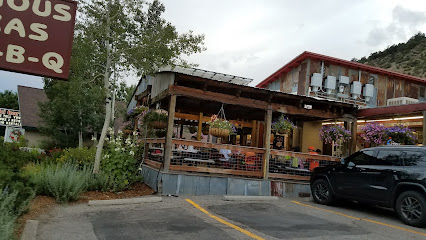
Durango Diner
Discover authentic American comfort food at Durango Diner - where delicious meals meet a charming atmosphere in the heart of Colorado.
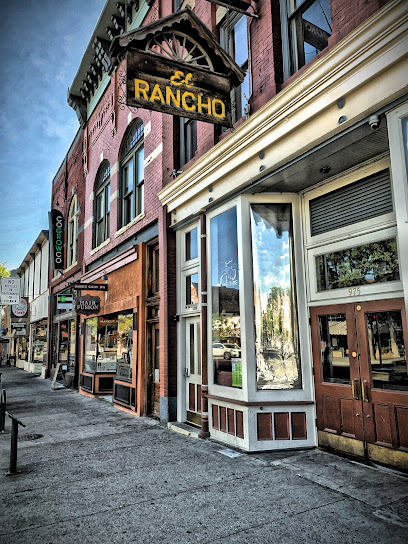
636 Main Ave
Experience the best of American and Asian fusion cuisine at 636 Main Ave in Durango - where flavor meets creativity.
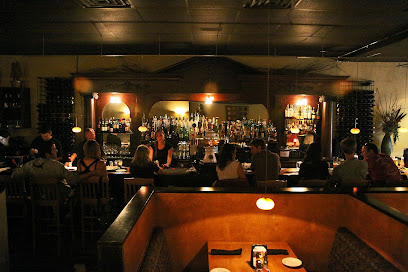
Oscar's Cafe
Discover Oscar's Cafe in Durango for delicious breakfasts served in a cozy diner atmosphere at affordable prices.
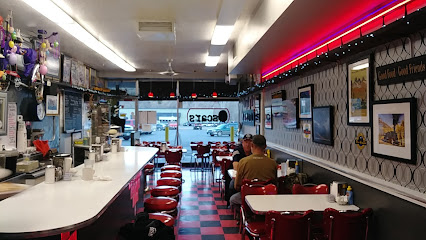
Zia Taqueria
Experience authentic Mexican cuisine at Zia Taqueria in Durango - where every bite tells a story of tradition and flavor.
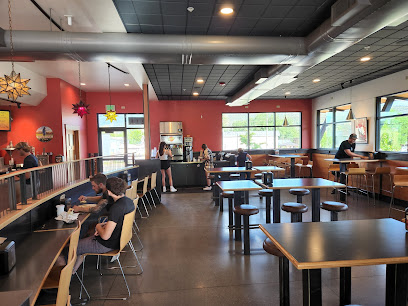
Diamond Belle Saloon
Discover authentic American dining at the historic Diamond Belle Saloon in Durango, where great food meets lively entertainment.

Himalayan Kitchen
Experience authentic Himalayan cuisine in Durango with flavorful Indian dishes at Himalayan Kitchen - a must-visit culinary gem.
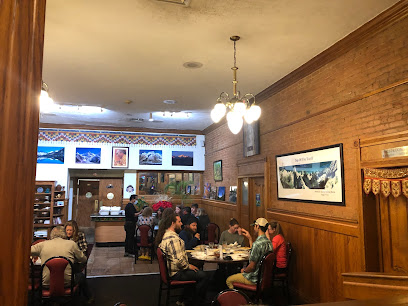
Tequila's Family Mexican Restaurant
Experience authentic Mexican cuisine at Tequila's Family Mexican Restaurant in Durango - where flavor meets tradition.

El Moro Spirits and Tavern
Experience innovative cuisine and craft cocktails at El Moro Spirits and Tavern in Durango—where every meal is a celebration of local flavors.
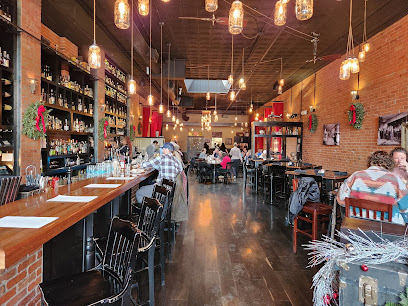
Gazpacho Restaurant
Experience the vibrant tastes of Mexico at Gazpacho Restaurant in Durango – where authentic flavors meet a warm atmosphere.
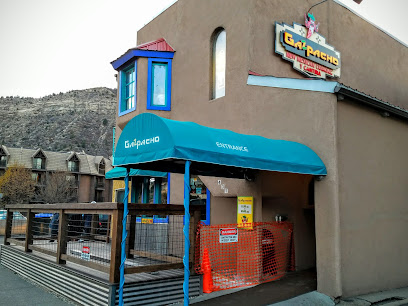
Derailed Pour House
Experience the vibrant atmosphere at Derailed Pour House in Durango - where delicious American cuisine meets live music and craft cocktails.
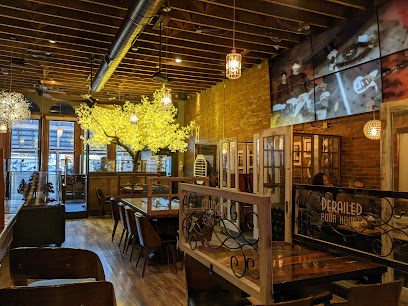
11th Street Station
Experience Durango's vibrant culinary scene at 11th Street Station - a lively gastropub with diverse flavors and craft beverages.
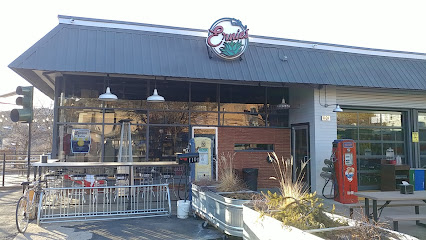
Markets, malls and hidden boutiques
Durango Mall
Explore Durango Mall: A shopping haven in the scenic town of Durango, Colorado, with diverse retail options and delightful dining experiences.
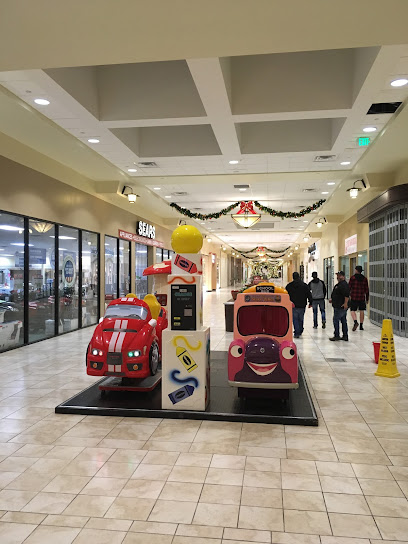
Main Mall
Discover the Main Mall in Durango, where shopping meets local charm and vibrant entertainment awaits every visitor.
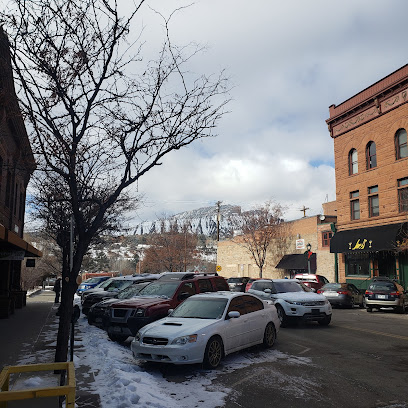
Durango Antique Market
Explore the Durango Antique Market for a unique shopping experience filled with vintage clothing, collectibles, and timeless antiques in the heart of Colorado.
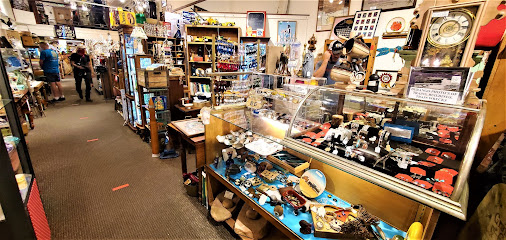
White Rabbit Books & Curiosities
Explore an eclectic collection of used books and charming curiosities at White Rabbit Books & Curiosities in Durango, Colorado.
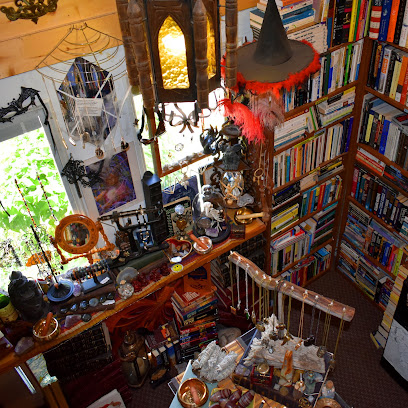
Earthbound Trading Co.
Explore Earthbound Trading Co. in Durango for unique gifts, sustainable products, and a truly memorable shopping experience.

Second Time Around
Discover the charm of Durango at Second Time Around, a unique consignment shop filled with vintage treasures and stylish finds.
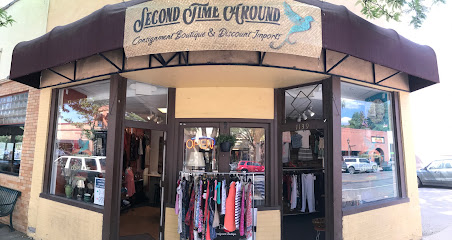
Dunn Deal Resale Store
Explore Durango's eclectic second-hand paradise at Dunn Deal Resale Store, where vintage treasures and local charm await every visitor.
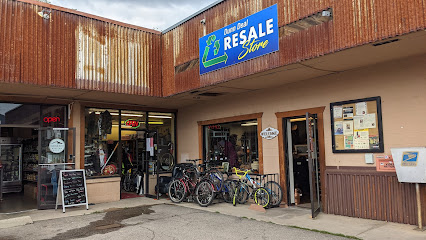
Dietz Market Inc
Explore Dietz Market Inc in Durango, Colorado for unique gifts and local treasures that encapsulate the spirit of your travels.
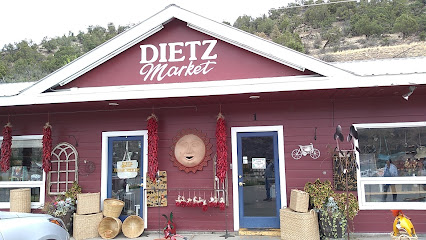
Animas Trading Co
Explore Animas Trading Co in Durango, CO for unique gifts, local crafts, and fashion accessories that embody the spirit of Colorado.

Durango Treasures
Explore Durango Treasures for unique local crafts and gifts that embody the spirit of Durango, Colorado.

The Sparrow
Discover unique fashion and accessories at The Sparrow in Durango, CO, a stylish destination for all your clothing needs.
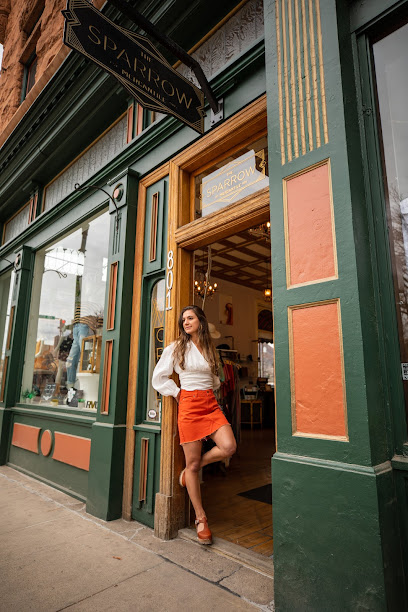
Durango Sustainable Goods + Cafe & Mocktail Bar
Discover unique, eco-friendly home goods and refreshing mocktails in the heart of Durango, Colorado, at Durango Sustainable Goods + Cafe & Mocktail Bar.
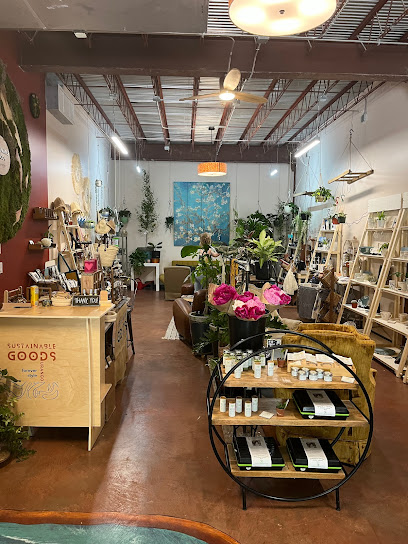
Urban Market
Discover unique gifts, stylish furniture, and home goods at Urban Market in Durango, Colorado, a must-visit shopping destination for tourists.

A Shared Blanket-Donna Frank
Explore A Shared Blanket in Durango, where Native American art and culture come to life through stunning galleries and authentic crafts.

Out of the Blue
Discover unique, locally-inspired T-shirts at Out of the Blue in Durango, the perfect souvenir to remember your Colorado adventure.

Essential bars & hidden hideouts
Steamworks Brewing Company
Discover the essence of craft brewing at Steamworks Brewing Company, where local flavors meet artisanal craftsmanship in Durango, Colorado.
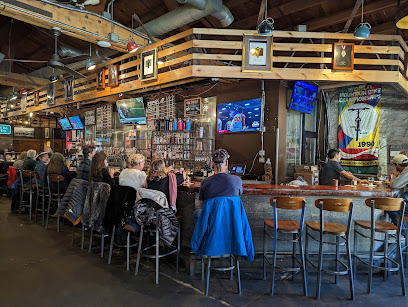
Carver Brewing Co.
Experience the rich flavors of craft beer and American cuisine at Carver Brewing Co. in Durango, Colorado - a local gem for food and beer enthusiasts.
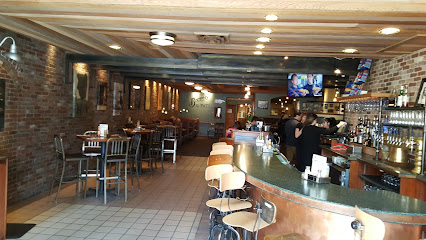
Diamond Belle Saloon
Discover the historic Diamond Belle Saloon in Durango, Colorado, where traditional American cuisine meets the lively ambiance of the Old West.
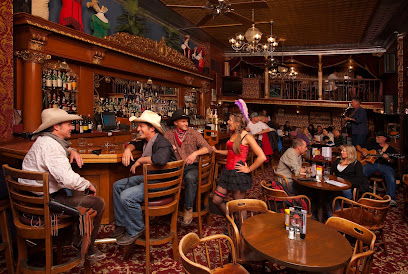
El Moro Spirits and Tavern
Discover local flavors and a warm ambiance at El Moro Spirits and Tavern, the heart of Durango's culinary scene.
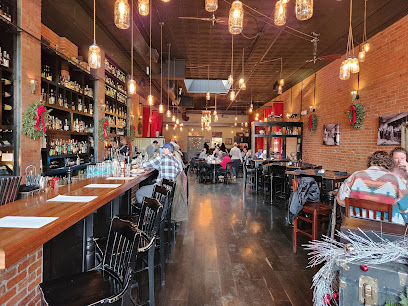
Derailed Pour House
Discover the vibrant atmosphere and delicious American cuisine at Derailed Pour House in Durango, where great food meets live music.
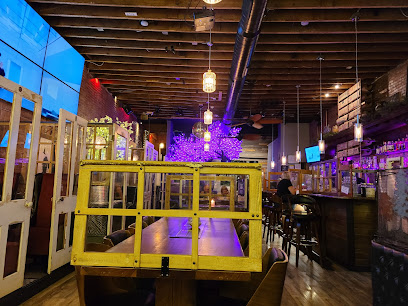
Eolus Bar & Dining
Discover the exquisite flavors and vibrant atmosphere of Eolus Bar & Dining, a top-rated culinary destination in Durango, Colorado.
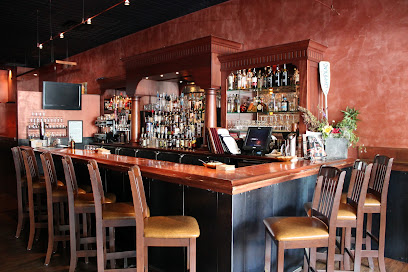
Balcony Bar & Grill
Experience the perfect blend of exquisite cuisine and magnificent views at Balcony Bar & Grill in Durango, Colorado, a must-visit for every traveler.
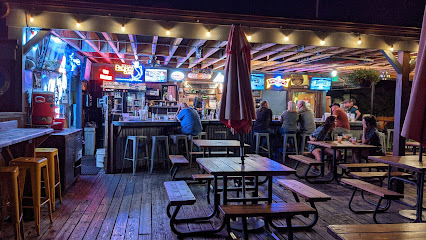
El Rancho Tavern
Experience the lively atmosphere and local culture at El Rancho Tavern, a top bar destination in Durango, Colorado, with live music and delicious drinks.
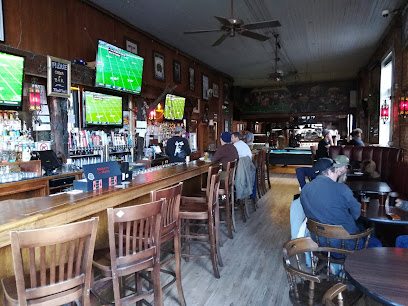
Starlight Lounge
Experience the vibrant nightlife of Durango at Starlight Lounge, where craft cocktails and entertainment meet under the stars.

Wild Horse Saloon
Discover the Wild Horse Saloon in Durango - A lively bar with great drinks, music, and a vibrant dance floor for an unforgettable night out.
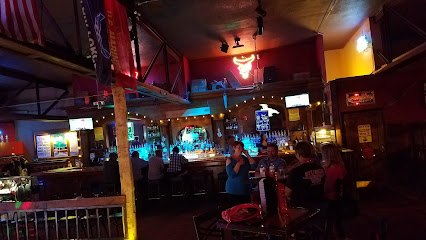
Orio's Roadhouse
Discover the lively ambiance and great drinks at Orio's Roadhouse in Durango, Colorado, a must-visit bar for all travelers.
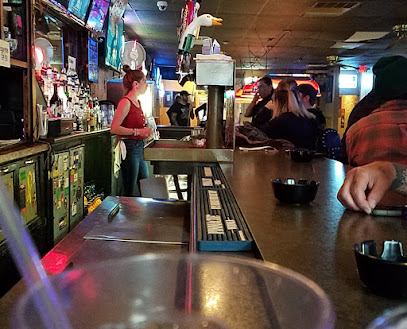
8th Ave. Tavern
Experience the vibrant atmosphere and friendly vibe at Durango's favorite local bar, 8th Ave. Tavern, where good times and great drinks await.
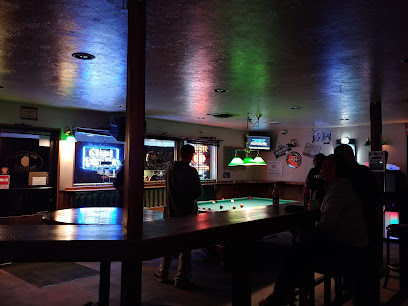
The Office Spiritorium
Discover The Office Spiritorium in Durango, a vibrant bar and restaurant offering creative cocktails and delicious food in a cozy atmosphere.
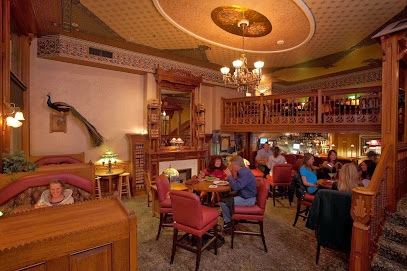
Union Social House
Discover Union Social House: A vibrant lounge in Durango, Colorado, offering delightful drinks and a lively atmosphere perfect for relaxation.
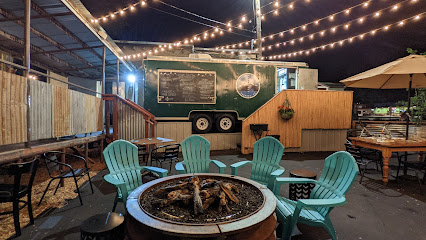
Local Phrases
-
- HelloHowdy
[haʊ-di] - GoodbyeAdios
[ɑˈdi.oʊs] - YesSi
[si] - NoNo
[noʊ] - Please/You're welcomePor favor/De nada
[pɔr fəˈvɔr/deɪ ˈnɑdə] - Thank youGracias
[ˈɡɹɑ.si.əs] - Excuse me/SorryDisculpe/Perdon
[dɪˈskʌl.pe/pɚˈdɑn] - How are you?¿Cómo estás?
[koˈmo eˈstɑs] - Fine. And you?Bien. ¿Y tú?
[biˈɛn. eɪnd ju] - Do you speak English?¿Hablas inglés?
[ˈɑblɑz ˈɪŋɡlɪʃ] - I don't understandNo entiendo
[noʊ ˌʌn.dɚˈstænd]
- HelloHowdy
-
- I'd like to see the menu, pleaseMe gustaría ver el menú, por favor
[mi ɡʌs.təˈɾi.ə veɾ ɛl meˈnu poɚ fəˈvɔr] - I don't eat meatNo como carne
[noʊ ˈiːt mit] - Cheers!Salud!
[səˈlʌd] - I would like to pay, pleaseMe gustaría pagar, por favor
[mi ɡʌs.təˈɾi.ə peɪ, poɚ fəˈvɔr]
- I'd like to see the menu, pleaseMe gustaría ver el menú, por favor
-
- Help!¡Ayuda!
[ˈhɛlp] - Go away!¡Vete!
[ɡoʊ əˈweɪ] - Call the Police!¡Llama a la policía!
[kɔl ðə pəˈlis] - Call a doctor!¡Llama a un doctor!
[kɔl ə ˈdɑktɚ] - I'm lostEstoy perdido
[ˈaɪm lɔst] - I'm illEstoy enfermo
[ˈaɪm ɪl]
- Help!¡Ayuda!
-
- I'd like to buy...Me gustaría comprar...
[mi ɡʌs.təˈɾi.ə kɑmˈpɹ] - I'm just lookingSólo estoy mirando
[ˈsoʊloʊ ɪˈstɔɪ məˈɹændoʊ] - How much is it?¿Cuánto cuesta?
[ˈhwʌt ˈkʌnt ɪt] - That's too expensiveEso es muy caro
[ðæts tuː ɪkˈspɛnsɪv] - Can you lower the price?¿Puedes bajar el precio?
[kæn ju ˈloʊɚ ðə praɪs]
- I'd like to buy...Me gustaría comprar...
-
- What time is it?¿Qué hora es?
[wʌt taɪm ɪz ɪt] - It's one o'clockEs la una
[ɪts wʌn əˈklɑk] - Half past (10)Media (10)
[hæf pæst, ten] - MorningMañana
[ˈmɔrnɪŋ] - AfternoonTarde
[ˌæftɚˈnun] - EveningNoche
[ˈivnɪŋ] - YesterdayAyer
[ˈjɛstɚˌdeɪ] - TodayHoy
[təˈdeɪ] - TomorrowMañana
[təˈmɑr.oʊ] - 1Uno
[ˈwʌn] - 2Dos
[doʊs] - 3Tres
[treɪs] - 4Cuatro
[ˈkwɑˌtroʊ] - 5Cinco
[ˈsɪŋ.koʊ] - 6Seis
[seɪs] - 7Siete
[ˈsiˌɛt] - 8Ocho
[ˈoʊˌtʃoʊ] - 9Nueve
[nwev] - 10Diez
[diːs]
- What time is it?¿Qué hora es?
-
- Where's a/the...?¿Dónde está...?
[wɛɹz əˈðɛ] - What's the address?¿Cuál es la dirección?
[ˈhwʌts ðə əˈdɹɛs] - Can you show me (on the map)?¿Puedes mostrarme (en el mapa)?
[kæn ju ʃoʊ mi (ɒn ðə mæp)] - When's the next (bus)?¿Cuándo es el próximo (autobús)?
[wɛnz ðə nɛkst (bʌs)] - A ticket (to ....)Un boleto (a ....)
[ə ˈtɪkɪt (tu)]
- Where's a/the...?¿Dónde está...?
History of Durango
-
Durango, Colorado, was officially founded in 1880 by the Denver & Rio Grande Railway. The town was established to serve the San Juan mining district and quickly became a key transportation hub for the region. Its name was inspired by Durango, Mexico, reflecting a trend of naming American towns after foreign locations.
-
One of Durango's most iconic features is the Durango & Silverton Narrow Gauge Railroad, which began operation in 1882. This historic railway was initially used to transport silver and gold ore from the San Juan Mountains, but today it serves as a popular tourist attraction, offering scenic rides through breathtaking mountain landscapes.
-
Durango thrived during the late 19th and early 20th centuries as a result of the mining boom in the nearby San Juan Mountains. The discovery of precious metals, including gold and silver, attracted thousands of prospectors and led to the rapid development of the area. The town's economy flourished as businesses and services sprang up to support the growing population.
-
Built in 1887, the Strater Hotel is one of Durango's most historic landmarks. This Victorian-era establishment quickly became a social and cultural center for the town. Today, it continues to welcome guests, offering a glimpse into Durango's rich past with its period furnishings and historic charm.
-
Long before European settlers arrived, the area around Durango was inhabited by the Ute people. The Utes are the original stewards of the land, with a rich cultural heritage and deep connection to the region. Their history and traditions continue to influence the cultural landscape of Durango today.
-
The Animas River, which runs through Durango, has been a lifeline for the region for centuries. Named 'El Río de las Animas Perdidas' (The River of Lost Souls) by Spanish explorers, the river has supported agriculture, industry, and recreation in the area. It remains a focal point for outdoor activities and environmental stewardship.
-
Located just a short drive from Durango, Mesa Verde National Park is home to some of the most well-preserved Ancestral Puebloan cliff dwellings in the United States. Established in 1906, the park offers a unique window into the lives of the Ancestral Pueblo people who inhabited the region from AD 600 to 1300.
-
In the early 1800s, Spanish explorers and traders traveled through the area that would become Durango along the Old Spanish Trail. This network of trade routes connected northern New Mexico with California and played a crucial role in the exchange of goods and cultural influences across the American Southwest.
-
The Colorado Gold Rush of the mid-19th century brought a wave of settlers to the region, including what is now Durango. Prospectors seeking their fortunes in the gold fields contributed to the rapid growth and development of new settlements, laying the groundwork for Durango's eventual establishment.
Durango Essentials
-
Durango is located in southwestern Colorado. The nearest major airport is Durango-La Plata County Airport (DRO), which is approximately 15 miles from downtown Durango. This airport offers direct flights from major cities such as Denver, Dallas, and Phoenix. Alternatively, you can fly into Albuquerque International Sunport (ABQ) in New Mexico, which is about a 3.5-hour drive from Durango. If you prefer traveling by car, Durango is accessible via U.S. Highway 550 and U.S. Highway 160.
-
Durango offers several transportation options. The Durango Transit operates a local bus service with multiple routes covering key areas in the city. Taxis and rideshare services like Uber and Lyft are available as well. For a unique experience, consider the Durango & Silverton Narrow Gauge Railroad, which offers scenic train rides through the San Juan National Forest. If you plan to explore the surrounding areas, renting a car is recommended.
-
The official currency in Durango, Colorado, is the United States Dollar (USD). Credit and debit cards are widely accepted in most establishments, including hotels, restaurants, and shops. ATMs are readily available throughout the city for cash withdrawals. It's advisable to carry some cash for smaller businesses and rural areas that may not accept cards.
-
Durango is generally a safe destination for tourists. However, like any other city, it is important to take standard precautions. Avoid walking alone at night in unfamiliar areas and be mindful of your belongings in crowded places. While Durango does not have specific high-crime areas targeting tourists, it is always best to stay vigilant and aware of your surroundings.
-
In case of emergency, dial 911 for immediate assistance. Durango has a well-equipped local police station and medical facilities, including Mercy Regional Medical Center, which provides comprehensive healthcare services. It is advisable to have travel insurance that covers medical emergencies. For minor health issues, there are several pharmacies in the city where you can purchase over-the-counter medications.
-
Fashion: Do dress in layers as the weather can change rapidly. Casual attire is generally acceptable, but bring outdoor gear if you plan on hiking or skiing. Religion: Do respect local religious customs and traditions. Public Transport: Do be courteous to drivers and other passengers. Don’t eat or drink on public transport. Greetings: Do greet people with a friendly handshake or a smile. Eating & Drinking: Do try local cuisine and craft beers. Don’t forget to tip your server, as it is customary in the United States.
-
To experience Durango like a local, visit the Durango Farmers Market held on Saturdays from May to October, where you can buy fresh produce and local crafts. Engage with the locals by attending community events and festivals, such as the Durango Bluegrass Meltdown. Take advantage of the numerous outdoor activities, including hiking, mountain biking, and skiing. Don't miss the opportunity to explore historic downtown Durango, with its charming shops, art galleries, and restaurants.
Trending Landmark in Durango
-
Durango & Silverton Narrow Gauge Railroad
-
Steamworks Brewing Company
-
Carver Brewing Co.
-
Strater Hotel
-
Mild to Wild Rafting & Jeep Tours
-
Mountain Waters Rafting
-
El Moro Spirits and Tavern
-
Pinkerton Hot Springs
-
Animas Brewing Company
-
11th Street Station
-
Chimayo Stone Fired Kitchen
-
Jean Pierre Bakery & Wine Bar
-
Animas Chocolate & Coffee Company
-
Durango Off Leash Dog Park
-
The Powerhouse
Nearby Cities to Durango
-
Things To Do in Farmington
-
Things To Do in Pagosa Springs
-
Things To Do in Ouray
-
Things To Do in Montrose
-
Things To Do in Blanding
-
Things To Do in Gunnison
-
Things To Do in Alamosa
-
Things To Do in Crested Butte
-
Things To Do in Moab
-
Things To Do in Grand Junction
-
Things To Do in Gallup
-
Things To Do in Los Alamos
-
Things To Do in Salida
-
Things To Do in Taos
-
Things To Do in Aspen



